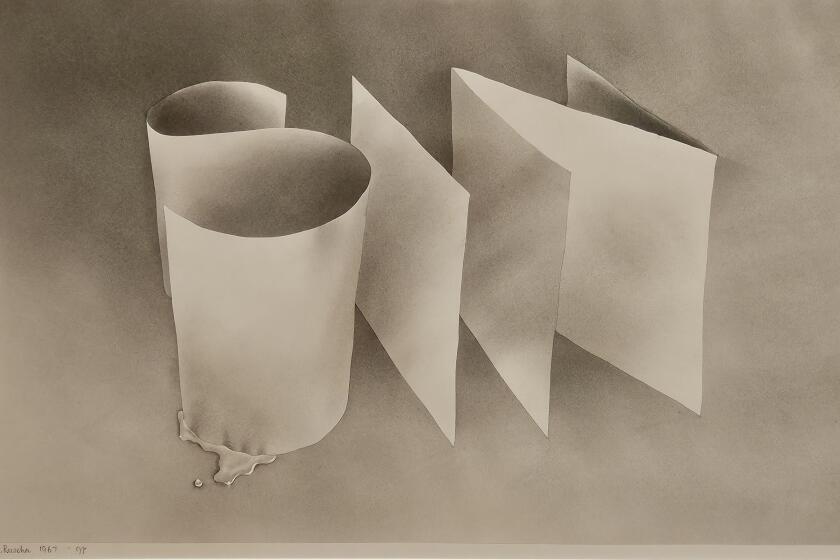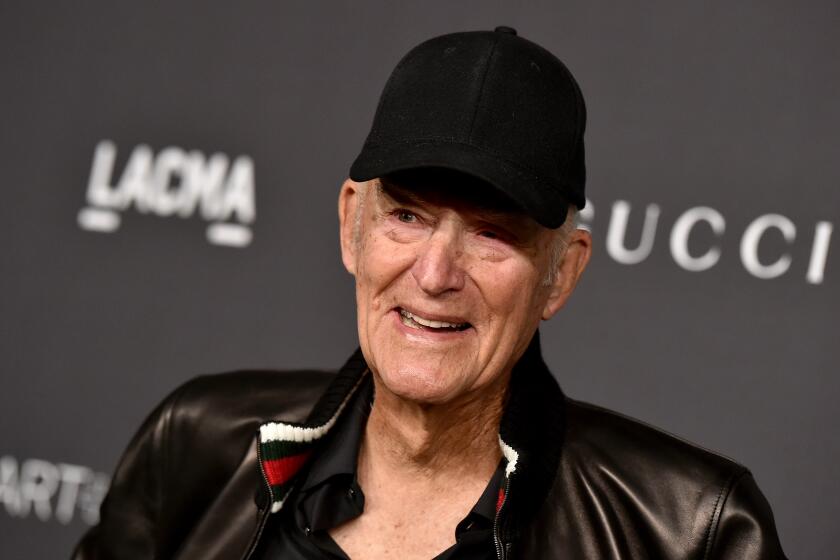A show about L.A.âs rambunctious 1960s Ceeje Gallery proves that progress in art is an illusion
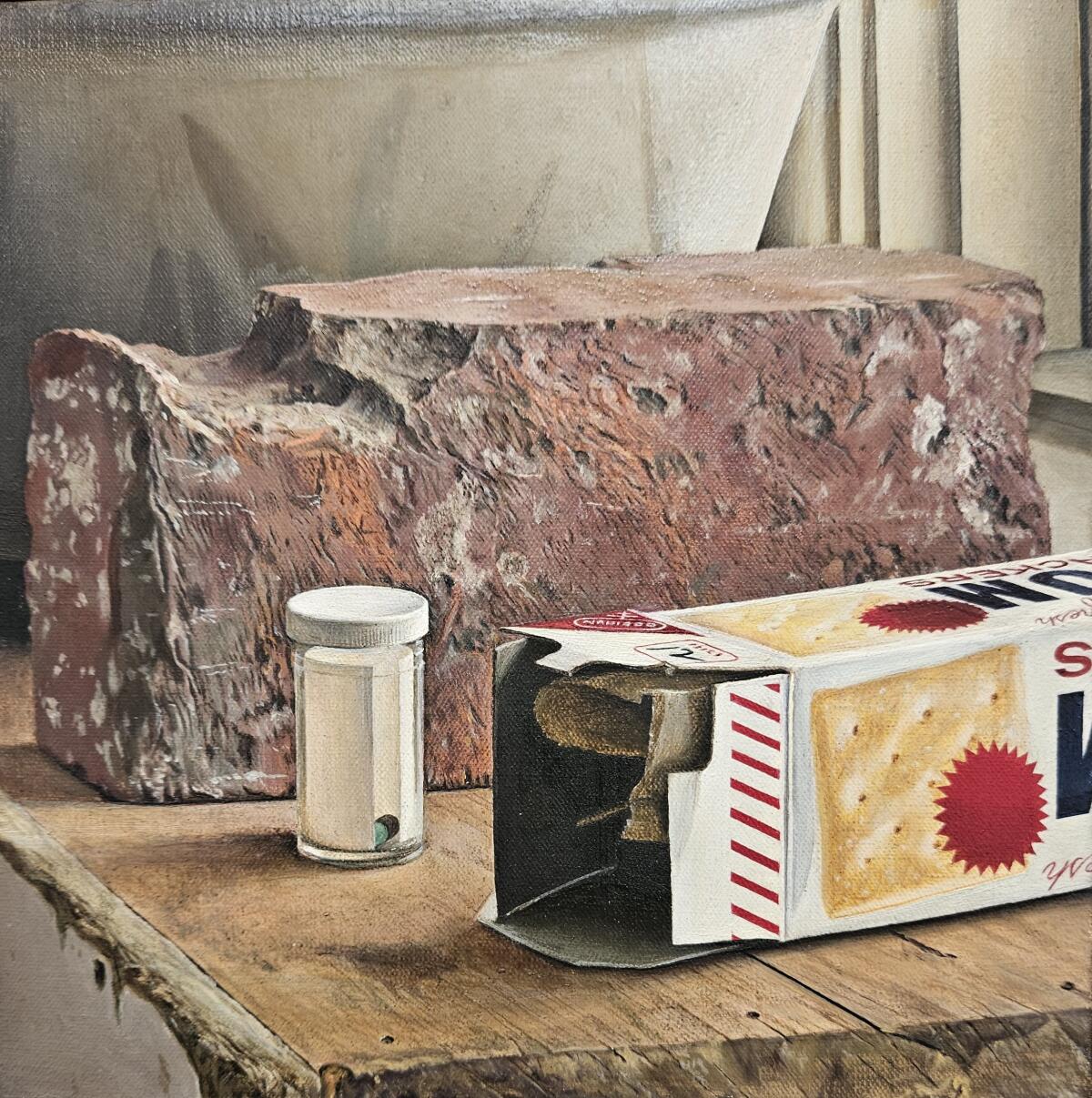
In the beginning there was Ferus.
So starts many a mistaken notion of the postwar Los Angeles art scene, which slowly but surely erupted into prominence after Ferus Gallery opened on La Cienega Boulevard in 1957. The showroom could certainly claim the most noteworthy stable of artists to emerge overall, especially in the 1960s. But Ferus was just one gallery among a number of other notable commercial spaces along the street â Ankrum, Eugenia Butler, Rex Evans, Feingarten, Felix Landau, Riko Mizuno, Herbert Palmer, Esther Robles, David Stuart, Nicholas Wilder and more.
Ceeje was another. In the Williamson Gallery at Pasadenaâs Art Center College of Design, a sizable exhibition takes stock of the rambunctious place, which operated for more than seven years. Itâs the second such retrospective overview â an earlier one was at the Municipal Art Gallery in 1984 â and itâs a fuller, more absorbing accounting, with 98 works by 29 artists. Surprisingly, much about todayâs art world is foreshadowed.
To inaugurate the summer 1962 opening of Ceeje Gallery a couple of blocks up from Ferus and across the street on La Cienega, two doors down from Romaine Avenue, the gifted Roberto Chavez painted a disarming group portrait of the four participating artists. Chavez, Charles Garabedian, Eduardo Carrillo and Louis Lunetta are shown waist up, shoulder to shoulder, arrayed confrontationally â sort of like a friendly police lineup.
Theyâre seated behind a tabletop, a brushy plane of pale and mottled yellow that takes up almost half the picture. In the extreme foreground, a battered brown ankle boot, laces loosened, is reverently displayed on the table for our scrutiny, as if a holy relic placed on an altar. The patriarchal artists, all mustachioed, are staring us down â except for Chavez, who gives a side-eye to Garabedian, cigarette in hand and middle finger casually extended, resting on the table.
The painting is titled âThe Group Shoe.â
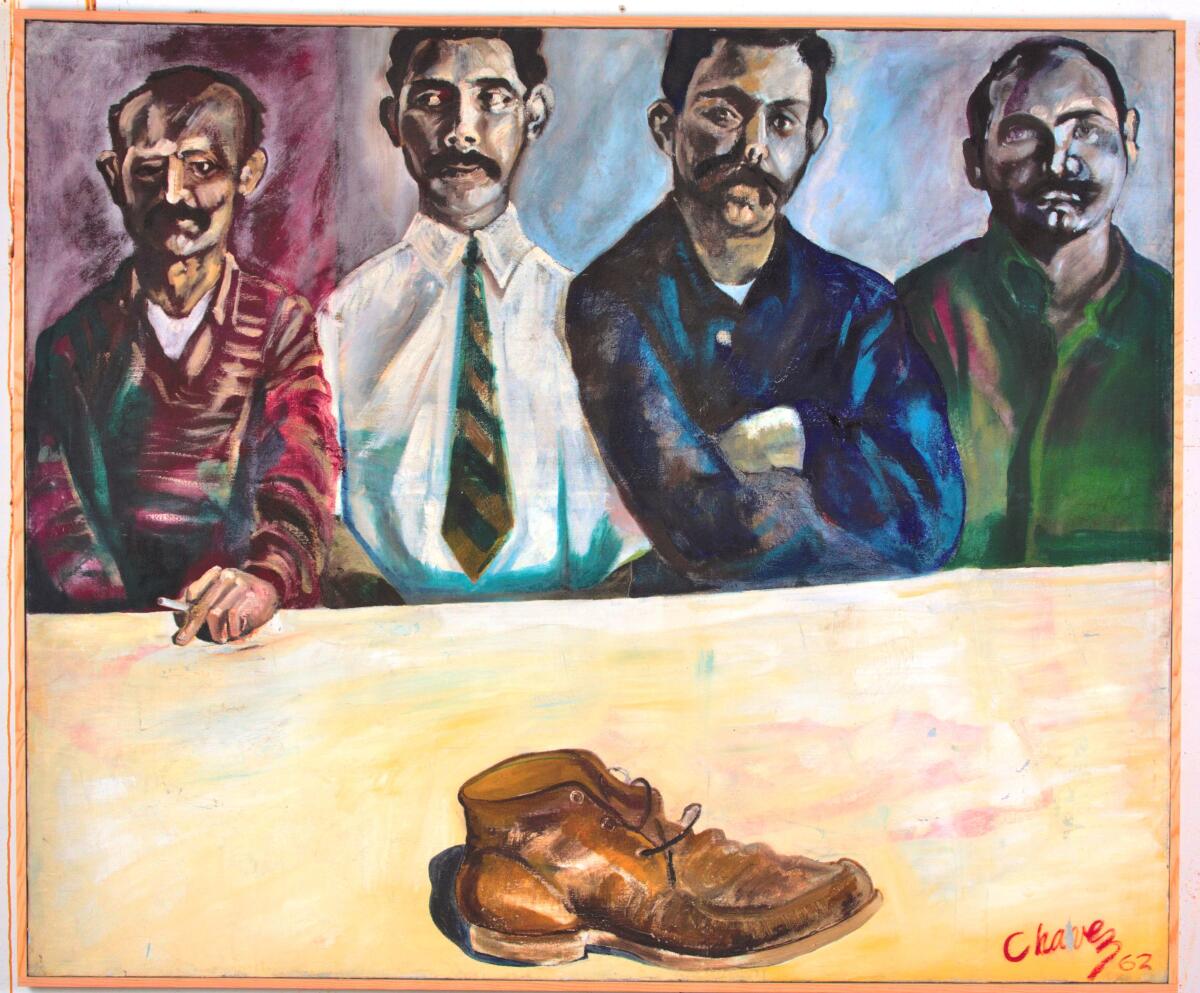
The corny pun nods to Ed Sullivan, whose hugely popular Sunday night CBS variety program fertilized postwar television with prewar vaudeville. Comedians mocked the impresarioâs wooden and affected vocal delivery as he hawked the guests performing on the show that night, making for âa really big shoe [sic].â Chavez and company cheerfully chimed in with their own.
Their big painted shoe, however, has another history. This second, outsider artistic legacy is as a prized talisman representing the passionate, impoverished, working class labor of Vincent van Gogh, who couldnât get the time of day from the Paris art world during his lifetime. Van Gogh, in more than one symbolic self-portrait, represented himself as a sentimental still life of his own worn and shabby brown ankle boots.
In âThe Group Shoe,â art culture seamlessly fuses with pop culture. The Ceeje artists, tossing a sly wink and a serious nod, merged their own art historical interests, slanted toward the Modern Expressionism that Van Gogh had birthed, plus the unadulterated mass culture that two weeks later would explode down the street at Ferus.
A thrilling Ruscha retrospective, an inventive 3-D printed home, an important acquisition by the Huntington and more in this weekâs newsletter
Thatâs when Andy Warholâs graphic paintings of 32 âCampbellâs Soup Cansâ had their controversial public debut, erupting in dismissive yelps of âhoax!â Secreted inside Warholâs choice of commercial supermarket cans, however, was artist Willem de Kooning, the Dutch-born American titan of Abstract Expressionist art, who described his own brand of messy paint as âsoup.â By contrast, the âGroup Shoeâ artists wore their homage to another Dutch Expressionist on their sleeve.
Ceeje Gallery was founded by Cecil Hedrick and Jerry Jerome, a gay couple that turned a struggling decorative arts shop into a full-fledged art gallery. (Hedrick made wildly embellished ceramics, Jerome was an actor, and the couple supplemented their gallery business with a modest Continental restaurant upstairs, offering a small menu of homemade fare.) Ceejeâs odd-looking moniker, pronounced âsee-jay,â combined their first namesâ initials. To help with the pronunciation, the inaugural showâs poster added a French accent aigu to the final letter â CeejĂŠ â a mannerism that was soon dropped.
Refocusing attention on sidelined art history is a specialty of Michael Duncan, the Pasadena showâs guest curator, who also organized the eye-opening âAnother World: The Transcendental Painting Group, 1938â1945â at the Los Angeles County Museum of Art last year. He notes in the deeply researched Ceeje catalog that the gallery showed perhaps the most diverse range of artists of any gallery at the time in the city â white, Latino, Black, Asian, male, female, gay, straight, young, old.

There were lyrical experimental photographers â Edmund Teske and Barbara Morgan â then almost unheard of for a gallery full of painters. The list also includes Ed Newell (1940-80), a talented and unhoused painter of sometimes nightmarish images of weird beasts who lived on the streets in Venice, where he scavenged materials and suffered what is thought to have been bipolar disorders; and self-taught septuagenarian Marcel Cavalla (1890-1966), a retired pastry chef whose naĂŻve confections in oil on board made him a sort of Grandpa Moses of Bunker Hill.
Hedrick and Jerome, as homosexuals determined to flourish in a narrowly heteronormative culture, knew the myriad social controls and cruelties, casual and otherwise, that strangle daily life. Today, the counterculture mix among the exhibitionâs artists is mainstream â and certainly under threat of strangulation again.
Most of the artists were born during the Great Depression. Largely, however, what the Ceeje stable of artists shared was a school â namely, UCLA, where the majority of them had studied or served on the faculty. (Annita Delano, whose vivid Southwest landscape watercolors surge with sentient life, helped found the art department in 1919.) The academic environment may have tacitly encouraged a degree of stylistic conservatism, which was at odds with the decadeâs exhilarating blast of Pop, Minimal and Conceptual art. But that too foreshadows something taken for granted in art now: The European myth of innovation in an avant-garde, championed at galleries like Ferus, has long since been abandoned.
Art does change, but progress is an illusion. Hence the Art Center exhibitionâs shrewd title, âAdvance of the Rear Guard: Ceeje Gallery in the 1960s,â adapted from a 1964 show.
Artist Robert Irwin, who designed the Getty Centerâs Central Garden and led the first original art form to emerge from Los Angeles, has died at age 95.
Garabedian, nearly 40 when the gallery opened, was something of an elder statesman â and apparent spirit guide â for the group. His portrait turns up in paintings by Les Biller (dressed as a florid Tuscan prince), Maxwell Hendler (as a Social Realist middle-manager), and two by Chavez, as well as in his own large, marvelous picture where he casts his wife, child and himself as a secular âholy family.â Garabedian assumes the fatherly supporting role of St. Joseph, the carpenter, shown in the background building a domestic shelter reminiscent of those in Renaissance nativities by Giotto or Botticelli. Out front is his personal Madonna and child. The static geometry of the figures recalls Piero della Francesca, but with an indifference to optical perfection whose gentle awkwardness charms.
Two very small paintings, just a few inches on each side, by Hendler and Marvin Harden, stand out among several engaging examples by both. They invite close looking.
Hendlerâs riveting âBrickâ â maybe the showâs finest painting and certainly my favorite â took about a year to paint, according to the catalog, and it is lavished with a perceptual acuity akin to contemporaneous work by Vija Celmins. A regimented still life, it lines up an open box of saltine crackers, a clear plastic pill case holding a single capsule, a solid but chipped red brick and a decorated ceramic bowl. Painted close-up with hyper precision, the objects recede in an orderly diagonal across a wooden tabletop, which implies an inscrutable narrative to the specific choices.
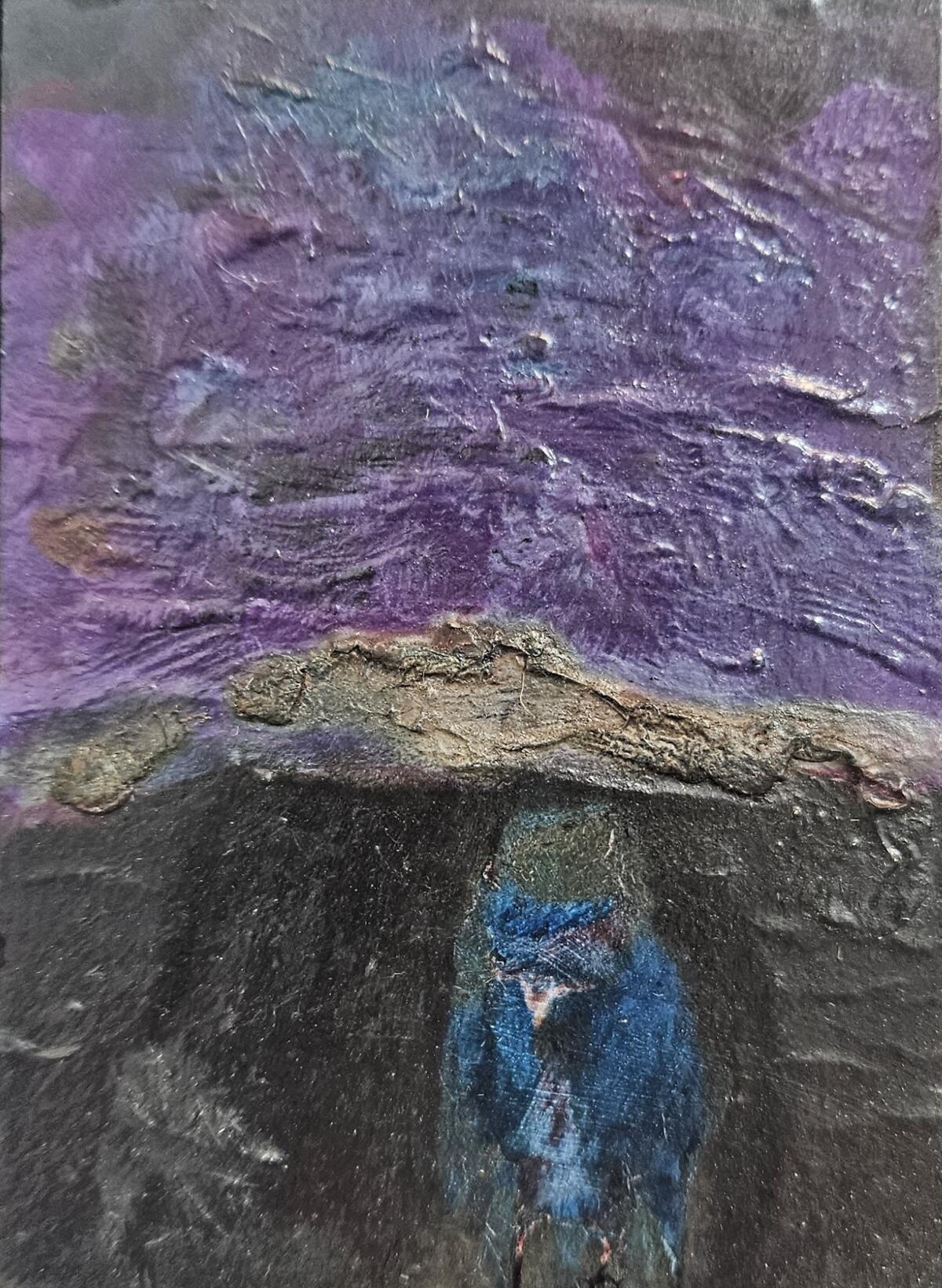
âNo ideas but in things,â as poet William Carlos Williams put it â and that includes Hendlerâs own canvas. Painting has been called a vessel, a stimulant and a nutrient, but Hendlerâs chosen object for its title â brick â might allude to his painted thing. Ordinary items expose an otherworldly mystery lurking within the everyday.
By contrast, Hardenâs tiny âmelancholia #21â is a dark, thickly painted image of a delicate bird set against atmospheric bands of mottled black, silvery gray and pearlescent purple. The little sceneâs tender fragility is paradoxically held together by a muscularity of brushwork, familiar from Abstract Expressionist canvases of monumental scale.
Some individual works hold unusual interest. Ray Brownâs âFather and Sonâ is a blistering image of parental brutality, the whip-wielding manâs muscular nakedness like a grim Roman Hercules and the glowing red body of the battered young boy, who grasps a shrieking rooster, electrified by a vivid blue contour-line. Arleen Goldberg Hendlerâs still life looking into a brown paper bag stuffed with the dayâs trash is an equally muscular painting, but its humble subject matter is dismissive of grandiose symbolism. The masked darkness of monstrous figures in Ben Sakoguchiâs adept etching, âMaternity I,â seems to be born of Goya.
A cluster of diverse works by Joan Maffei makes you want to see more. One is a weirdly erotic ladybug being devoured by a Venus flytrap, another a hot dog-holding body surfer slicing dramatically through a seaweed-entangled wave and a third a panoramic drawing of a vacuum cleaner embracing a dress beneath what appears to be an interrogation lamp. Sharp stylization enlivens a distinctly feminist perspective throughout.
The showâs catalog positions the Ceeje artists as âwillfully oblivious of career strategy and the commercial market,â which may be true but actually isnât all that daring for Los Angeles in the early 1960s, a time and place almost devoid of opportunities for such things. Ferus, after all, worked hard to create both careers and a market, but it folded before Ceeje did â although given todayâs asset- and investment-minded gallery scene, it does seem long ago and far away. Although visually very different, the showâs best work shares a free-wheeling iconoclasm with major Ferus artists like Ed Ruscha and Robert Irwin. It can still seem disarmingly fresh.
âAdvance of the Rear Guard: Ceeje Gallery in the 1960sâ
Where: Alyce de Roulet Williamson Gallery, Art Center College of Design, 1700 Lida St., Pasadena
When: Through March 9. Noon to 5 p.m. Wednesdays to Saturdays. Reservations recommended.
Info: (626) 396-2200, www.artcenter.edu
More to Read
The biggest entertainment stories
Get our big stories about Hollywood, film, television, music, arts, culture and more right in your inbox as soon as they publish.
You may occasionally receive promotional content from the Los Angeles Times.
